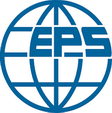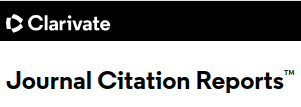Method of canonical transformations in the theory of quantum gases interacting with radiation
DOI:
https://doi.org/10.5488/cmp.28.23302Keywords:
quantum gases, photons, canonical transformations, dressed atoms, dispersion law, effective massAbstract
An approach to the theoretical study of effects and phenomena in quantum gases interacting with radiation is proposed. The approach is based on a modification of the canonical transformation method, which was once used to diagonalize Hamiltonians describing the interaction of electrons with phonons in a solid. The capabilities of the method are demonstrated by studying the influence of photons on the spectral characteristics of atoms of quantum gases interacting with radiation. Within the framework of the developed approach, the effect of “dressing” atoms of quantum gases by a cloud of virtual photons is investigated and expressions for the energy characteristics of such dressed atoms — quasiparticles are obtained. The problem of defining the concept of the effective mass of such quasiparticles is discussed.
References
Klaers J., Schmitt J., Vewinger F., Weitz M., Nature, 2010, 468, 545. DOI: https://doi.org/10.1038/nature09567
Klaers J., Schmitt J., Damm T., Dung D., Vewinger F., Weitz M., Proc. SPIE, 2013, 468, 8600. DOI: https://doi.org/10.1117/12.2001831
Slyusarenko Yu. V., Slyusarenko O. Yu., J. Math. Phys., 2017, 58, 1133021. DOI: https://doi.org/10.1063/1.5010334
Kruchkov A., Slyusarenko Yu., Phys. Rev. A, 2013, 88, 013615. DOI: https://doi.org/10.1103/PhysRevA.88.013615
Boichenko N., Slyusarenko Yu., Condens. Matter Phys., 2015, 18, 43002. DOI: https://doi.org/10.5488/CMP.18.43002
Peletmiskii A. S., Slyusarenko Yu. V., Sotnikov A. G., Theory of Exotic States in Quantum Fermi and Bose Systems, Naukova Dumka, Kyiv, 2023 (in Ukrainian).
Euler H., Kockel B., Naturwissenschaften, 1935, 23, 246. DOI: https://doi.org/10.1007/BF01493898
Akhieser A., Landau L., Pomeranchook I., Nature, 1936, 138, 206. DOI: https://doi.org/10.1038/138206a0
Bulakhov M. S., Peletminskii A. S., Slyusarenko Yu. V., Ukr. J. Phys., 2024, 69, No. 8, 600. DOI: https://doi.org/10.15407/ujpe69.8.600
Altschul B., Astropart. Phys., 2008, 29, 290. DOI: https://doi.org/10.1016/j.astropartphys.2008.02.006
Pérez Rojas H., Rodríguez Querts E., Eur. Phys. J. C, 2014, 74, 2899. DOI: https://doi.org/10.1140/epjc/s10052-014-2899-y
Saglam Z., Sahin G., J. Mod. Phys., 2015, 6, 937. DOI: https://doi.org/10.4236/jmp.2015.67098
Landau L. D., Lifshits E. M., Quantum Mechanics: Non-Relativistic Theory, Course of Theoretical Physics, Vol. 3, Pergamon Press, Oxford New York, third edn., 1977.
Peletminskii S. V., Slyusarenko Yu. V., J. Math. Phys., 2005, 46, 022301. DOI: https://doi.org/10.1063/1.1812359
Frölich H., Proc. Roy. Soc. A, 1952, 215, 291. DOI: https://doi.org/10.1098/rspa.1952.0212
Davydov A. S., Pestryakov G. M., Phys. Status Solidi B, 1972, 49, 505. DOI: https://doi.org/10.1002/pssb.2220490212
Kittel C., Introduction to Solid State Physics, Wiley, Hoboken, NJ, eighth edn., 2005.
Wikipedia, Effective mass (solid-state physics) — Wikipedia, the free encyclopedia, 2025, [Online; accessed 10-Feb-2025], URL https://en.wikipedia.org/wiki/Effective_mass_(solid-state_physics).
Peletminskii A. S., Peletminskii S. V., Slyusarenko Yu. V., J. Phys. B: At. Mol. Opt. Phys., 2017, 50, 145301. DOI: https://doi.org/10.1088/1361-6455/aa75d6
Zagorodny A. G., Slyusarenko Yu. V., Shulga S. N., Low Temp. Phys., 2018, 44, 1049. DOI: https://doi.org/10.1063/1.5055846
Akhiezer A. I., Peletminskii S. V., Methods of Statistical Physics, Pergamon, Oxford, 1981.
Downloads
Published
Issue
Section
Categories
License
Copyright (c) 2025 M. S. Bulakhov, A. S. Peletminskii, P. P. Kostrobij, I. A. Ryzha, Yu. V. Slyusarenko

This work is licensed under a Creative Commons Attribution 4.0 International License.


















